Chinese Film Name:zhui la de shen pan; English Film Name: Anatomy of a Fall,Anatomie d’une chute
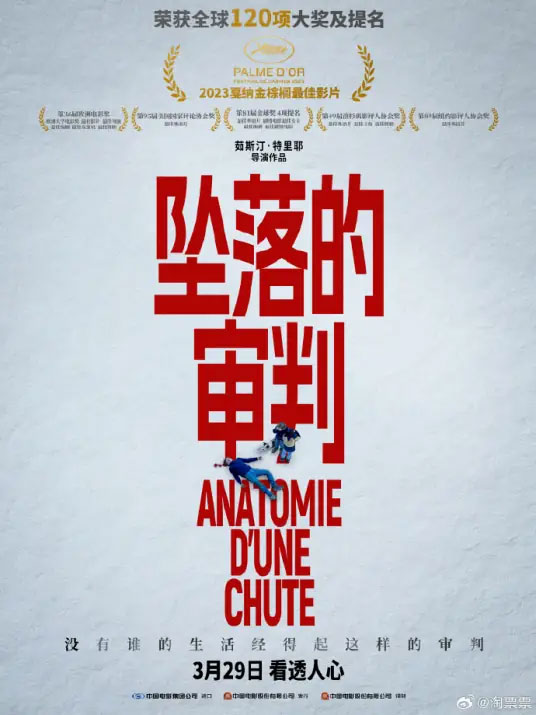
What is reality? Is it an objective existence or a subjective perception?
What is fiction? Is it a figment of the imagination or an altered version of reality?
How can we know the truth? Does science and logic provide sufficient basis?
How are judgements made? Based on empirical reasoning or emotional memory?
Beneath the surface of suspense and courtroom themes, the French film 《Anatomy of a Fall》 does not fall into a simple framework of evil versus good, crime versus punishment, but rather considers the medical, technological, legal, and logical aspects of modern society, as well as the cognitive, emotional, and memories that imbue an individual’s life. There is no God’s perspective. From the characters to the audience, everyone is blind, hovering in the grey area between truth and fiction. A seemingly commonplace social event is peeled out layer by layer to reveal the limitations of individual cognition, the powerlessness of the judicial system, and the complexity and diversity of the emotional and spiritual world. Even though the strong sense of problem leads to a few lines that are cumbersome and stiff, the film is still evocative because the writer and director do not provide standard answers.
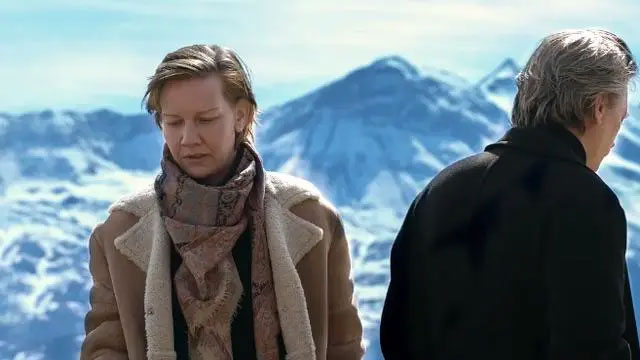
The film deals with a wide range of issues, and the viewer will be touched by each of them in a different way. Nonetheless, the basic structure can be summarised as a triangle of objective truth, subjective truth and fiction, resulting in the triple issues of law (social mechanism), marriage (emotional life) and literature (spiritual world), all of which ultimately come back to the core question that haunts the film: what is the truth? This is why the audience knows that the film is just a mystery case, but still insists on discussing whether the female protagonist is the murderer of her husband. Yes, when we are discussing “what is the truth”, no matter what the path is, we have already experienced a storm that overturns the perception of truth under the director’s arrangement.
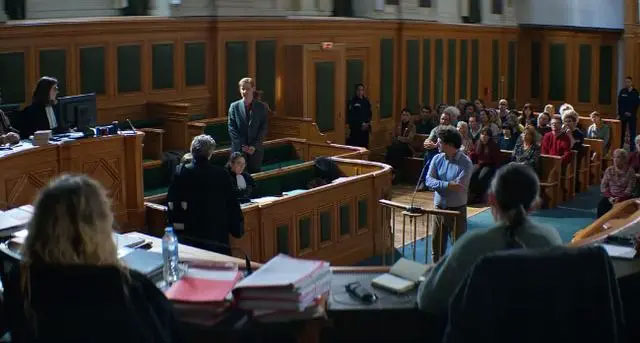
The original title of the film “Anatomie d’une chute” actually means “Anatomy of a fall”. The term “anatomie” is used to refer to a number of things, from the medical analyses necessary for the clarification of a case to the physical analyses of social structures, human emotions, and artistic creations. The ubiquitous “anatomie” carries the face of scientific rigour: the recording of information about the deceased, the reconstruction of the crime scene, the meticulous diagrams, the dialectical analysis of the chain of evidence, the rigorous indifference of the professional word. Paradoxically, however, profiling, as a basic means of seeking the truth in positivist science, aims at a complete recovery of the objective truth, but often requires recourse to assumptions, probabilities and even subjective feelings, imagination and memory. The prosecutor repeatedly asks the female student whether she “felt” Sandra’s seduction, forces her to “decipher the intentions of an unseen person”, and tries to use musical styles and even excerpts from novels as evidence… …
Did Samuel fall accidentally, commit suicide or was he pushed? Was the fall deliberate or unintentional? For defence lawyer Vincent, this was “beside the point”. He “didn’t care what was true”, but knew that the only strategy for a successful acquittal was to argue that Samuel had attempted suicide. Vincent asked Sandra to “recall” Samuel’s character and life story to “prove” his suicidal tendencies. From that moment on, Sandra, who had always expressed her disbelief in her husband’s suicide, began to select and organise her memories in a purposeful manner. She quickly recalled Samuel’s alcoholism, drug use, guilt over his son, and career frustrations, and she intentionally concealed her own infidelity, daily spousal arguments, and violence. Under the expert guidance of her lawyer, she organised a set of narrative discourses that pointed to a clear direction: Samuel’s deep guilt over his son’s blindness, his depression over his job failure, and ultimately his suicide.
So is Sandra guilty? This extremely attractive German woman with short blonde hair and tall physique exudes a strong unisex power. Rationally independent and highly disciplined, she always keeps her own pace and doesn’t tramp around because of her internalised ego. And because of the pain of her family of origin, she is a morally indifferent, self-centred partner with a tendency to violence in her rages. On top of this complex personality, she is also a novelist with a sensitive mind, a deep understanding of human nature and a wealth of creativity. The alternation between reality and fiction, the fusion of imagination and life has never been her area of expertise. Both the desire to get away with her crimes and her literary talent dictate the need and ability to create narratives that work in her favour.
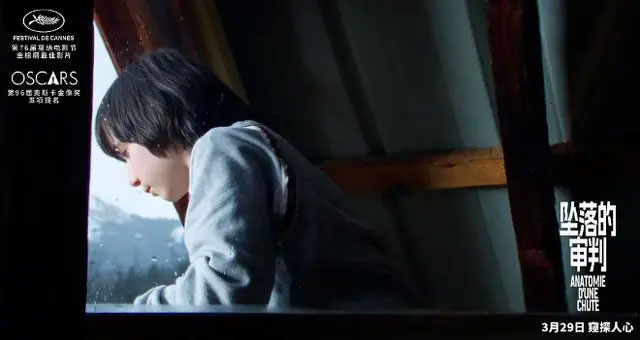
How can one tell how much of her testimony is mixed with facts and lies? At the beginning of the film, the director has already posed the question through the mouth of the interviewer: “You say that your book always alternates between truth and fiction, which makes us want to tell which parts are true and which parts are fiction.” Sandra looks away, struggling to provide an answer. As she says in rebuttal to the psychiatrist, “Maybe Samuel needs to see things as you describe them, but if I go to a psychiatrist, he can also stand here and say some really hard things about Samuel, but are those things said necessarily true?” Everyone has their own perceptions and imaginations of life, is what they see the “truth”? Are painful confessions closer to reality than organised memories? In a sense, is all discourse (testimony) literature and all narrative a trap?
As Sandra denied that Samuel’s recording was the truth, Vincent posed the question, “What is the truth?” He suggested that Sandra look at herself through the lens of how others might see her because “the trial is not about the truth.” During the trial, each speaker argued for the “facts” as they saw them. The concepts of “the way it is”, “the way it should be” and “the way I think it is” are intertwined. The court needs to “get back to the facts”. What facts? The guardian sent by the Ministry of Justice, whose surname Berger means “shepherd”, told Daniel: “When we lack the elements of judgement for something, and this lack is unbearable, all we can do is to make a decision. In order to overcome doubt, sometimes we must choose to favour one side over the other. Since you must believe one thing, but there are two alternatives, you must choose.”
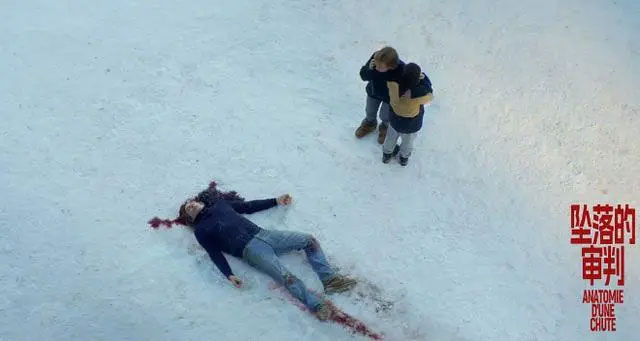
It is not that Daniel did not suspect his mother, but he always loved her and wanted to protect her, so his memories would “go from 100 per cent certainty to uncertainty”. The baptised Daniel understands that the court is concerned with “provable truth”. Once a choice is made, he has to “make up what he believes in a sense” in order to justify his choice. So he volunteers to testify. As Daniel narrates, the camera switches to a close-up of Samuel’s head. Samuel’s lips are opening and closing, but the voice belongs to Daniel, suggesting that the child has “altered” his memory to rescue his mother. “If she killed him, I can’t figure it out; if he killed himself, I can figure it out”, Daniel eventually chooses the “truth” that his emotions and logic can understand and accept.
With the help of Daniel’s testimony, Sandra was acquitted. This is the “truth” as determined by the court. But why did Samuel fall? Where did the blunt force trauma to the head originate? The mystery of the case remains unexplained. The legal truth is still far from the objective truth. As the audience breathes a sigh of relief at the acquittal of the charismatic Sandra, they suddenly realise that perhaps this is a triumph of literature over the law, and that we have all fallen into the double narrative trap of character and director.
At the end of the film, Sandra walks into her husband’s study and lays down on the sofa in a relaxed position, cuddling with her pet dog Snoopy. The night is still, dark and hazy. Everything is on the surface and the truth remains in the mist.
Please specify:Anime Phone Cases » Anatomy of a Fall Film Review:The Storm That Turned Truth Perceptions Upside Down